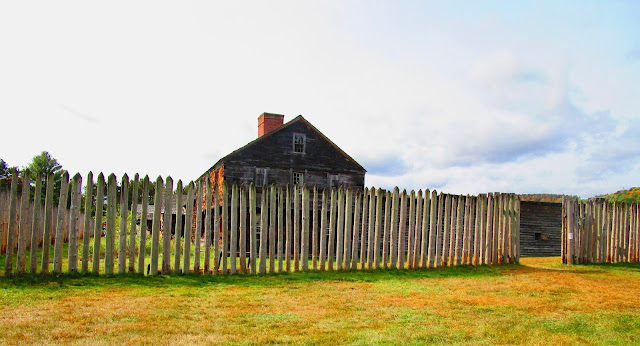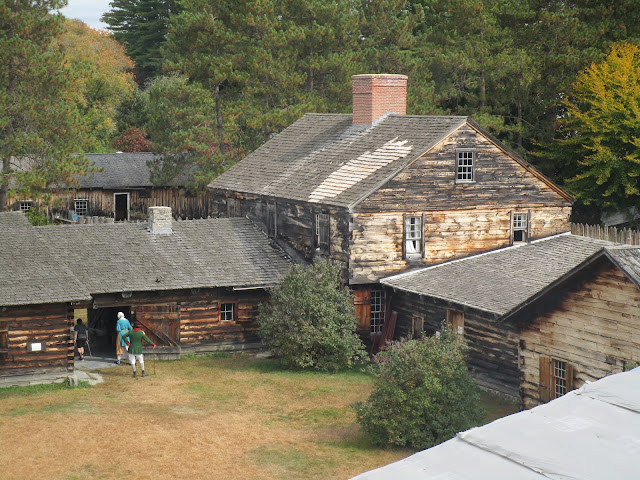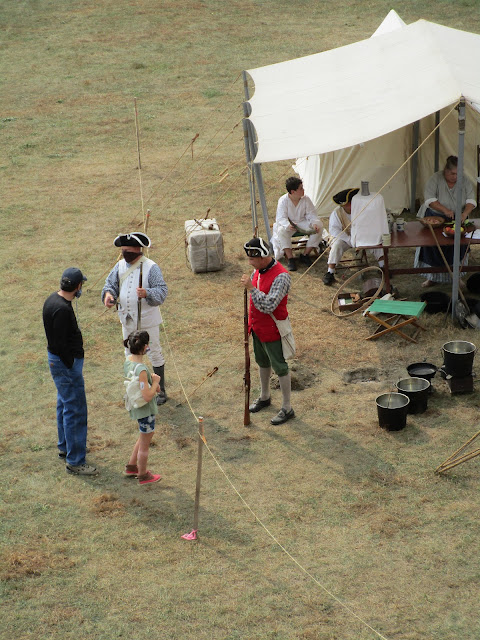The Fort at No. 4 in Charleston, NH was established by the Massachusetts Bay Colony in 1735 along with 3 other settlements along the east side of the Connecticut River. It wasn't until 1740 when one of the first persons to purchase shares of the town came to settle. By 1743 there were 10 families owning shares of this the most north western British settlement, thirty miles from the nearest town.
There was a lot of danger living out in this wilderness, especially with England and France not on good terms. French settlements were to the north in what is now Quebec and alliances made with native peoples brought war to these settlers. There was fighting in 1746, 1747, 1749, 1753, and 1754 when killing changed to taking captives for ransom.
The fort was actually a fortified village of 6 houses. It was surrounded by a pike stockade with gaps between the pikes.
So why the gaps? Apparently at Deerfield, MA the stockade had no gaps and when it snowed the snow piled up. Enemies could climb over the stockade when the drifts were high. Gaps prevents the snow from creating drifts.
We visited a re-creation of the Fort on Sunday, September 27th when a Revolutionary War re-enactment was taking place. During that war Charlestown was an assembly point for troops and troops involved with the Battle for Bennington marched from here.
These historical markers were in town.
The original fort stood west of Main Street in present day Charleston though the exact location has been lost to history.














3 comments:
This was interesting, especially the part about the gaps in the fence.
...an interesting period of history.
The history and buildings on the east coast are fascinating. Here on the west coast, most of our history is about the Native Americans which is also interesting. Our buildings are much more modern and in my opinion, boring.
Post a Comment